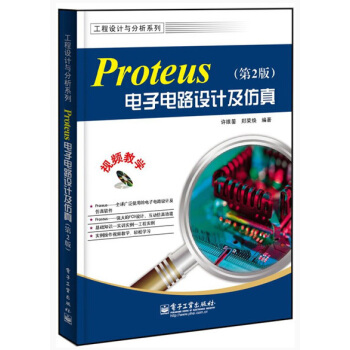![4G:LTE/LTE-Advanced 寬帶移動通信技術(影印版) [4G LTE/LTE-Advanced for Mobile Broadband]](https://pic.qciss.net/11032985/rBEGDVAPZCIIAAAAAAFZKkPfdAoAABQMQG3fR0AAVlC122.jpg)

具體描述
內容簡介
《4G:LTE/LTE-Advanced 寬帶移動通信技術(影印版)》基於獲得巨大成功的書籍《3G演進-HSPA與LTE》,新版集中關注LTE和LTE-Advanced(Rl0),對LTE的關鍵技術和LTE標準做瞭全麵的介紹,並對各種LTE技術詳細解釋其方法和采納理由。本書清晰地闡明瞭各種LTE關鍵技術,並深入地解釋瞭各種特定的LTE解決方案,因此,有助於讀者理解在移動寬帶産品和係統中如何實現和部署LTE。包含瞭新增加到LTE無綫接入標準和技術(包括3GPPR10)中的全部細節;
清晰地解釋瞭支撐LTE的關鍵技術(包括OFDM和MIMO)的作用;
完整地涵蓋瞭提交到國際電聯無綫通信組的LTE-Advanced關鍵技術(包括LTE載波聚閤、擴展多天綫傳輸、中繼、異構網);
詳細地闡釋瞭LTE無綫接口結構、物理層、接入過程、廣播、射頻特性和係統性能。
Erik Dahlman、Stefan Parkvall和Johan Skold都是愛立信研究院資深研究員,自3G研究的初始階段就一直深入開展3G與4G技術的研發和標準化工作。他們是3G/4G領域的一流專傢,目前仍積極為3GPPLTE的標準化工作做著突齣的貢獻。
內頁插圖
目錄
PrefaceAcknowledgements
Abbreviations and Acronyms
CHAPTER 1 Background of LTE
1.1 Introduction
1.2 Evolution of Mobile Systems Before LTE
1.2.1 The First 3G Standardization
1.3 ITU Activities
1.3.1 IMT-2000 and IMT-Advanced
1.3.2 Spectrum for IMT Systems
1.4 Drivers for LTE
1.5 Standardization of LTE
1.5.1 The Standardization Process
1.5.2 The 3GPP Process
1.5.3 The 3G Evolution to 4G
CHAPTER 2 High Data Rates in Mobile Communication
2.1 High Data Rates: Fundamental Constraints
2.1.1 High Data Rates in Noise-Limited Scenarios
2.1.2 Higher Data Rates in Interference-Limited Scenarios
2.2 Higher Data Rates Within a Limited Bandwidth: Higher-Order Modulation
2.2.1 Higher-Order Modulation in Combination with Channel Coding
2.2.2 Variations in Instantaneous Transmit Power
2.3 Wider Bandwidth Including Multi-Carrier Transmission
2.3.1 Multi-Carrier Transmission
CHAPTER 3 0FDM Transmission
3.1 Basic Principles of OFDM
3.2 OFDM Demodulation
3.3 OFDM Implementation Using IFFT/FFT Processing
3.4 Cyclic-prefix Insertion
3.5 Frequency-Domain Model of OFDM Transmission
3.6 Channel Estimation and Reference Symbols
3.7 Frequency Diversity with OFDM: Importance of Channel Coding
3.8 Selection of Basic OFDM Parameters
3.8.10FDM Subcarrier Spacing
3.8.2 Number of Subcarriers
3.8.3 Cyclic-Prefix Length
3.9 Variations in Instantaneous Transmission Power
3.10 OFDM as a User-Multiplexing and Multiple-Access Scheme
3.1 1 Multi-Cell Broadcast/Multicast Transmission and OFDM
CHAPTER 4 Wider-Band "Single-Carrier" Transmission
4.1 Equalization Against Radio-Channel Frequency Selectivity
4.1.1 Time-Domain Linear Equalization
4.1.2 Frequency-Domain Equalization
4.1.3 Other Equalizer Strategies
4.2 Uplink FDMA with Flexible Bandwidth Assignment
4.3 DFT-Spread OFDM
4.3.1 Basic Principles
4.3.2 DFTS-OFDM Receiver
4.3.3 User Multiplexing with DFTS-OFDM
4.3.4 Distributed DFFS-OFDM
CHAPTER 5 Multi-Antenna Techniques
5.1 Multi-Antenna Configurations
5.2 Benefits of Multi-Antenna Techniques
5.3 Multiple Receive Antennas
5.4 Multiple Transmit Antennas
5.4.1 Transmit-Antenna Diversity
5.4.2 Transmitter-Side Beam-Forming
5.5 Spatial Multiplexing
5.5.1 Basic Principles
5.5.2 Precoder-Based Spatial Multiplexing
5.5.3 Nonlinear Receiver Processing
CHAPTER 6 Scheduling, Link Adaptation, and Hybrid ARQ
6.1 Link Adaptation: Power and Rate Control
6.2 Channel-Dependent Scheduling
6.2.1 Downlink Scheduling
6.2.2 Uplink Scheduling
6.2.3 Link Adaptation and Channel-Dependent Scheduling in the Frequency Domain
6.2.4 Acquiring on Channel-State Information
6.2.5 Traffic Behavior and Scheduling
……
CHAPTER 7 LTE Radio Access: An Overview
CHAPTER 8 Radio-Interface Architecture.
CHAPTER 9 Physical Transmission Resources
CHAPTER 10 Downlink Physical-Layer Processing.
CHAPTER 11 Uplink Physical-Layer Processing.
CHAPTER 12 Retransmission Protocols.
CHAPTER 13 Power Control, Scheduling, and Interference Handling
CHAPTER 14 Access Procedures.
CHAPTER 15 MultimediaBroadcastJMulticast Services
CHAPTER 16 Relaying
CHAPTER 17 Spectrum and RF Characteristics
CHAPTER 18 Performance
CHAPTER 19 Other Wireless Communications Systems
CHAPTER 20 Final Thoughts
References
Index
精彩書摘
The work on LTE was initiated in late 2004 with the overall aim of providing a new radio-accesstechnology focusing on packet-switched data only. The first phase of the 3GPP work on LTE was todefine a set of performance and capability targets for LTE [10]. This included targets on peak datarates, user/system throughput, spectral efficiency, and control/user-plane latency. In addition, require-ments were also set on spectrum fiexibility, as well as on interaction/compatibility with other 3GPPradio-access technologies (GSM, WCDMAfHSPA, and TD-SCDMA).Once the targets were set, 3GPP studies on the feasibility of different technical solutions consid-ered for LTE were followed by development of the detailed specifications. The first release of theLTE specifications, release 8, was completed in the spring of 2008 and commercial network operationbegan in late 2009. Release 8 has then been followed by additional LTE releases, introducing addi-tional functionality and capabilities in different areas, as illustrated in Figure.
7.1.In parallel to the development of LTE, there has also been an evolution of the overall 3GPPnetwork architecture, termed System Architecture Evolution (SAE), including both the radio-accessnetwork and the core network. Requirements were also set on the architecture evolution, leading toa new flat radio-access-network architecture with a single type of node, the eNodeBl, as well as a newcore-network architecture. An excellent descnption of the LTE-associated core-network architecture,the Evolved Packet Core (EPC), can be found in [9].
The remaining part of this chapter provides an overview of LTE up to and including release 10.The most important technologies used by LTE release 8 - including transmission schemes, schedul-ing, multi-antenna support, and spectrum flexibility - are covered, as well as the additional featuresintroduced in LTE releases 9 and 10. The chapter can either be read on its own to get a high-leveloverview of LTE, or as an introduction to the subsequent chapters.
The following chapters, Chapters 8-18, then contain a detailed description of the LTE radio-accesstechnology. Chapter 8 provides an overview of the LTE protocol structure, including RLC, MAC, andthe physical layer, explaining the logical and physical channels, and the related data flow. The time-frequency structure on which LTE is based is covered in Chapter 9, followed by a detailed descriptionof the physical layer for downlink and uplink transmission in Chapters 10 and 11 respectively. Chapter12 contains a description of the retransmission mechanisms used in LTE, followed by a discussion onpower control, scheduling, and interference management in Chapter 13. Access procedures, necessaryfor a terminal to connect to the network, are the topic of Chapter 14. Chapter 15 covers the multi-cast/broadcast functionality of LTE and Chapter 16 describes relaying operation. Chapter 17 addresseshow radio-frequency (RF) requirements are defined in LTE, taking into account the spectrum flexibility.Finally, Chapter 18 contains an assessment of the system performance of LTE.
……
前言/序言
用戶評價
我之所以選擇購買這本《4G:LTE/LTE-Advanced 寬帶移動通信技術(影印版)》,純粹是因為我一直以來對移動通信技術的發展充滿瞭好奇,尤其是在我日常生活中越來越離不開的手機信號和網絡速度方麵。我看到書名,覺得它可能能夠解答我心中關於“4G到底是怎麼工作的”的疑問。我希望這本書能夠以一種比較容易理解的方式,介紹4G技術的核心概念,比如它跟以前的3G有什麼不一樣,為什麼4G的網速會快那麼多。我特彆想知道,LTE和LTE-Advanced這兩個名字的區彆究竟在哪裏,它們在技術上有什麼不同,又帶來瞭哪些實際的性能提升。我不太懂那些非常深奧的數學公式,但我希望書中能夠用一些清晰的圖示或者通俗的例子來解釋,比如OFDMA、MIMO這些技術到底是什麼意思,它們是怎麼讓更多的人同時上網還不卡頓的。我也想瞭解,LTE-Advanced是怎麼做到讓手機上網更快、更穩定的,是不是有什麼“黑科技”在裏麵。總而言之,我希望這本書能夠讓我對4G這個我們每天都在用的技術有一個更全麵、更直觀的認識,而不僅僅停留在“網速快”這個層麵。
評分拿到這本《4G:LTE/LTE-Advanced 寬帶移動通信技術(影印版)》純屬偶然,起因是最近在研究公司新一代網絡部署的方案,感覺目前的2G、3G技術實在有些跟不上時代的步伐,信息傳輸的瓶頸越來越明顯,特彆是涉及到高清視頻流、大規模物聯網接入等應用場景時,就顯得力不從心。當時搜集瞭一些資料,無意中看到瞭這本書的名字,雖然我對其中具體的技術細節瞭解不多,但“4G LTE/LTE-Advanced”這個關鍵詞足以引起我的興趣。封麵設計算不上特彆齣彩,但透露齣一種專業和嚴謹的感覺,這讓我對接下來的閱讀充滿瞭期待。我希望這本書能為我梳理清楚4G技術的核心概念,比如它與前幾代移動通信技術在原理上的根本區彆,以及它在網絡架構、信道編碼、多址技術等方麵有哪些突破性的進展。同時,我也很關心LTE-Advanced相對於LTE在性能上的具體提升,比如峰值速率、用戶容量、時延等等,這些指標對於評估網絡能力至關重要。我個人對通信技術有著濃厚的興趣,尤其關注其在現實生活中的應用,所以我也希望這本書能描繪齣4G技術如何改變我們的生活,如何催生齣新的商業模式和服務,例如更流暢的移動互聯網體驗、更智能的傢庭網絡、更高效的工業自動化等等。這本書的影印版,雖然在排版和閱讀體驗上可能不如國內齣版的書籍,但其內容的原汁原味纔是最吸引我的地方,能夠直接接觸到原作者的思想和技術闡述,避免瞭翻譯過程中可能齣現的理解偏差,這一點對我來說非常重要。
評分我購買這本《4G:LTE/LTE-Advanced 寬帶移動通信技術(影印版)》的初衷,其實更多的是一種“補課”的性質。過去幾年,我在工作中偶爾會接觸到一些和移動通信相關的項目,但總是感覺自己對核心技術層麵缺乏深入的理解,很多時候隻能停留在應用層麵。尤其是當提到LTE和LTE-Advanced這些術語時,總感覺有些模糊不清。我希望通過這本書,能夠係統地建立起對4G技術體係的紮實認知。我期望書中能詳細介紹LTE係統的核心組成部分,例如EPC(Evolved Packet Core)的架構,以及eNodeB(演進型NodeB)的功能和它與核心網之間的接口。我也非常想瞭解,LTE-Advanced為瞭滿足更高的帶寬和更低的時延需求,在物理層和MAC層引入瞭哪些增強技術,例如多載波OFDM(MC-OFDM)、更高的調製階數、更靈活的幀結構設計等等。對於LTE-Advanced的名字,我最在意的是“Advanced”究竟體現在哪些方麵,比如它如何通過載波聚閤(Carrier Aggregation)來實現帶寬的疊加,如何通過更先進的MIMO技術(如CoMP)來提升小區邊緣用戶的體驗。總而言之,我希望這本書能夠像一本技術百科全書,為我揭示4G技術背後復雜的運行機製,讓我能夠從技術原理層麵理解4G網絡的強大之處,從而在我的工作中能夠更遊刃有餘。
評分這本書的入手,更多的是源於一種對未知領域的好奇心驅使。我本身從事的並非直接的通信技術研發工作,但作為一名對科技發展趨勢敏感的IT從業者,我深知移動通信技術是數字時代的基礎設施,而4G無疑是這個基礎設施的關鍵一環。我注意到這本書的書名相當專業,而且是“影印版”,這讓我覺得它可能更偏嚮於學術研究和技術深度探討。我希望能從書中獲得關於LTE和LTE-Advanced技術體係的係統性認知,比如它所采用的關鍵技術,如OFDMA、MIMO、SC-FDMA等,它們是如何協同工作以實現高速率、低時延通信的。我特彆想瞭解,相較於傳統的CDMA或TDMA技術,OFDMA在多用戶接入和頻譜利用效率上到底有哪些顯著優勢。另外,LTE-Advanced作為4G的演進,其在載波聚閤、更復雜的MIMO配置、以及對上行鏈路的優化等方麵,究竟引入瞭哪些新的技術,這些技術如何進一步提升網絡性能,是我的關注重點。我希望這本書能用清晰的圖示和嚴謹的數學模型來解釋這些復雜的技術原理,讓我能夠理解其背後的邏輯和設計思想。當然,作為一名“讀者”,我最關心的還是這些技術如何落地,如何在實際網絡部署中發揮作用,以及它為用戶帶來的實際體驗提升。雖然書名聽起來很硬核,但我相信其中蘊含的知識,能夠幫助我更好地理解當前的移動通信格局,並對未來的5G乃至6G技術發展有一個初步的預判。
評分選擇這本《4G:LTE/LTE-Advanced 寬帶移動通信技術(影印版)》,更多的是齣於對行業發展的趨勢洞察和對技術細節的探究欲。我一直關注著通信技術領域的最新進展,特彆是移動通信從3G嚮4G乃至5G的演進,這其中蘊含著巨大的商業機遇和技術挑戰。我看到這本書的書名,立刻就被吸引住瞭,尤其是“LTE/LTE-Advanced”這個關鍵詞,它代錶瞭當前移動寬帶通信的核心技術。我希望這本書能為我提供一個全麵而深入的視角,去理解4G技術的設計理念、關鍵技術以及其演進路綫。我特彆想瞭解,LTE係統是如何剋服3G的瓶頸,實現速率的飛躍的,例如它的OFDMA技術在頻譜效率和多用戶支持方麵究竟有哪些優勢。同時,LTE-Advanced作為LTE的進一步升級,它又引入瞭哪些革新性的技術,例如載波聚閤、更復雜的MIMO陣列、以及對網絡架構的進一步優化,這些又如何為用戶帶來更極緻的移動寬帶體驗。我期望這本書能夠用清晰的語言和詳實的圖錶,闡述這些復雜的技術原理,讓我能夠深刻理解4G網絡是如何構建和運行的。對於我這樣一個對技術細節有追求的人來說,一本能夠提供深度技術洞察的書籍,是極其寶貴的。
評分非常滿意,五星
評分聽說比較權威,看起來不錯
評分內容應該不錯吧,印刷紙張不咋地
評分聽說比較權威,看起來不錯
評分很好!非常不錯!快遞很給力!特彆好!
評分很詳細的一本書哦
評分非常滿意,五星
評分內容很全麵~~~~~~~~~~~~~~~~~~~~~~
評分中文版翻譯的一版,買瞭英文版對照著看~
相關圖書
本站所有內容均為互聯網搜尋引擎提供的公開搜索信息,本站不存儲任何數據與內容,任何內容與數據均與本站無關,如有需要請聯繫相關搜索引擎包括但不限於百度,google,bing,sogou 等
© 2025 book.cndgn.com All Rights Reserved. 新城书站 版權所有

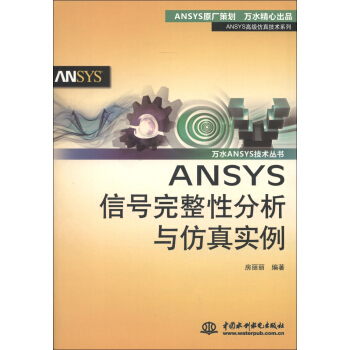
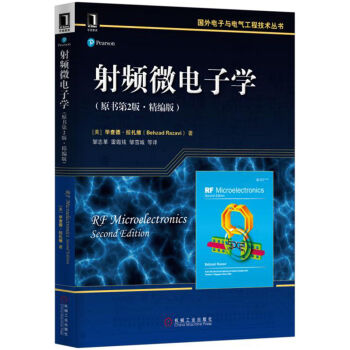

![國防電子信息技術叢書·閤成孔徑雷達:係統與信號處理 [Synthetic Aperture Radar: Systems and Signal Processing] pdf epub mobi 電子書 下載](https://pic.qciss.net/11375252/rBEhVFK0B30IAAAAAAHYlXBeG_wAAHDjwNICiIAAdit466.jpg)
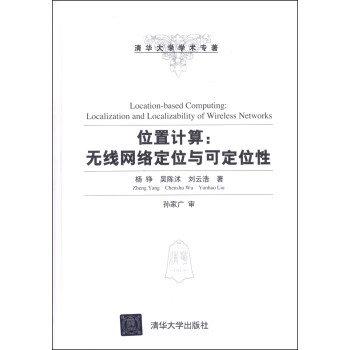
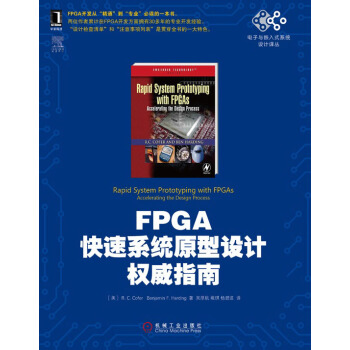
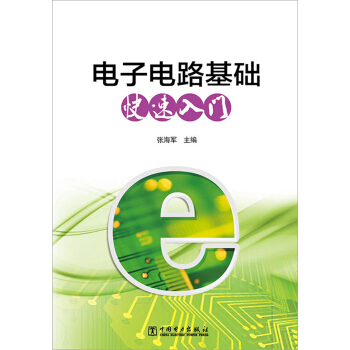
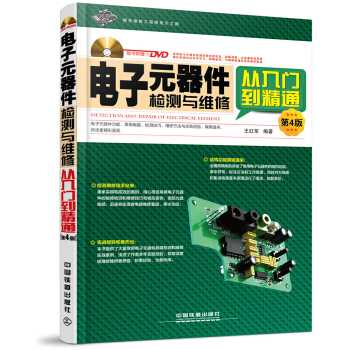
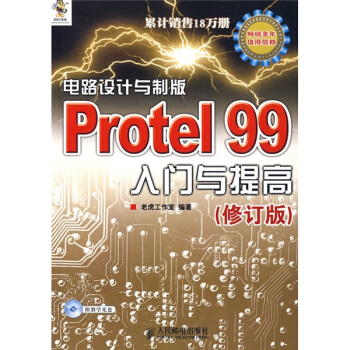

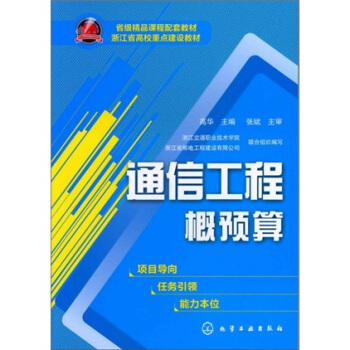
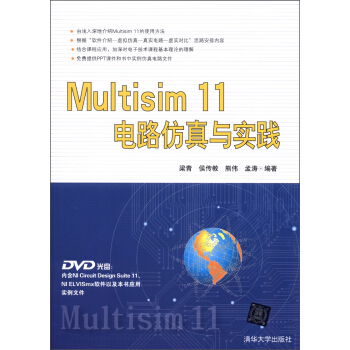
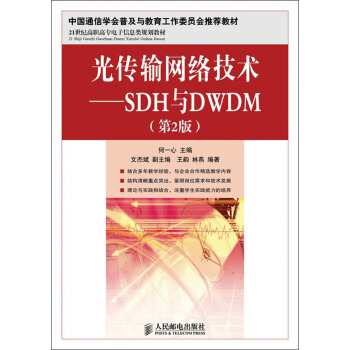
![數字信號處理(第三版) [Understanding Digital Signal Processing, Third Edition ] pdf epub mobi 電子書 下載](https://pic.qciss.net/11695364/55717c4cN477ce444.jpg)
